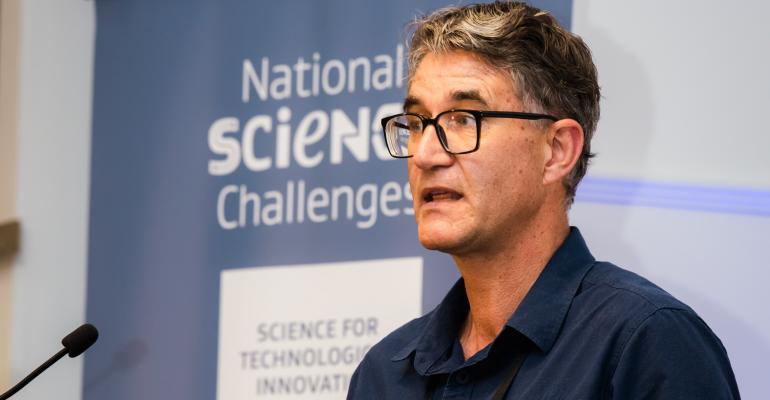
Dr Richard Parker
‘They taught me logging, I taught them calculus’ - tree fella to SfTI scientist, Dr Richard Parker.
Richard Parker worked in an Otago logging crew as a tree faller in the 1980s until hospitalised by a moving log.
Significant injuries and a long recuperation ended with him returning to University for a PhD in Ergonomics and Management – “less hazards’’. Today he researches teleoperation and robotics to enhance safety and productivity in dangerous jobs for Scion (the NZ Forest Research Institute).
Also part of SfTI’s Sensors, Robotics and Automation Spearhead, Dr Parker recently won $10,000 for his team in the Challenge’s inaugural Accelerate your impact competition with his pitch Karetao Hangarau-a -Mahi: Adaptive learning robots to complement the human workforce.
Despite being injured, he looks back on his logging days and the crews he worked with, with affection - “especially the smoko’s where they taught me logging, and I taught them calculus”.
We asked Richard some quick questions:
Where did you grow up?
My Father worked for the Post Office and we moved about. Amberley, Kaikoura, Christchurch, and Blenheim. I moved to Christchurch for University.
What drove you to a career in science?
Some relatives lent the family a set of encyclopaedias and opened the World up for me: photosynthesis, nuclear submarines, and strangely I was really excited about contour ploughing. All revelations for a rural North Canterbury child in the 1960s.
What your role with the Science for Technological Innovation National Science Challenge?
I’m part of the Robotics Spearhead contributing to understanding problems a robot would have in a forest. It’s difficult environment for robots – rain, gum, fragile bark, heavy falling objects.
What’s exciting about SfTI?
It pulls together people who’d normally not meet. I’ve talked with people working in aquaculture, gait analysis, lasers, 4D printing. Amazingly stimulating.
If you could give NZ science marks out of 10, what number would you choose?
10 for effort.
Why?
Everyone is seriously committed to doing exciting and useful science. There’s a lot of passion and commitment. But five for the system: funding’s so competitive.
What are NZ science strength and weaknesses?
Strength: We’re a small country so the distance between people who need science (foresters, farmers, doctors etc) and scientists is small. We can identify problems to work on quickly.
Weakness: The 1990s competitive funding model doesn’t encourage scientists to talk to each other.
In your view what’s Vision Mātauranga’s role in SfTI?
Provides a way of thinking about the world that’s not normally taught in formal scientific education. Māori lived and worked in forest environments without the technology we have today. There was a huge reliance on people and their interactions with each other. We can learn from that.
Tell us something people might not know about you.
I explored the use of armour, based on traditional medieval designs, for protecting forest workers using chainsaws. Got to spend time with the armourers at the Tower of London and got immersed in the NZ armour scene and worked with some remarkable people.